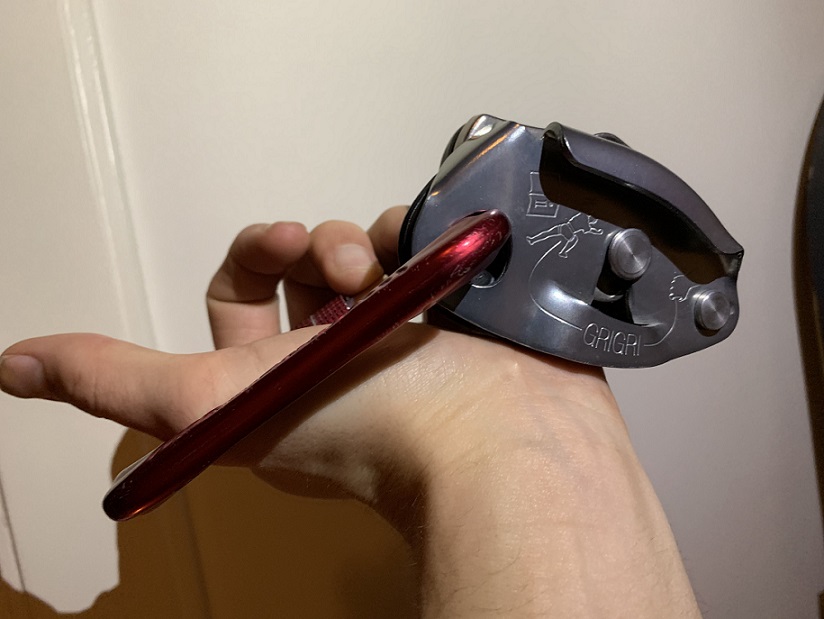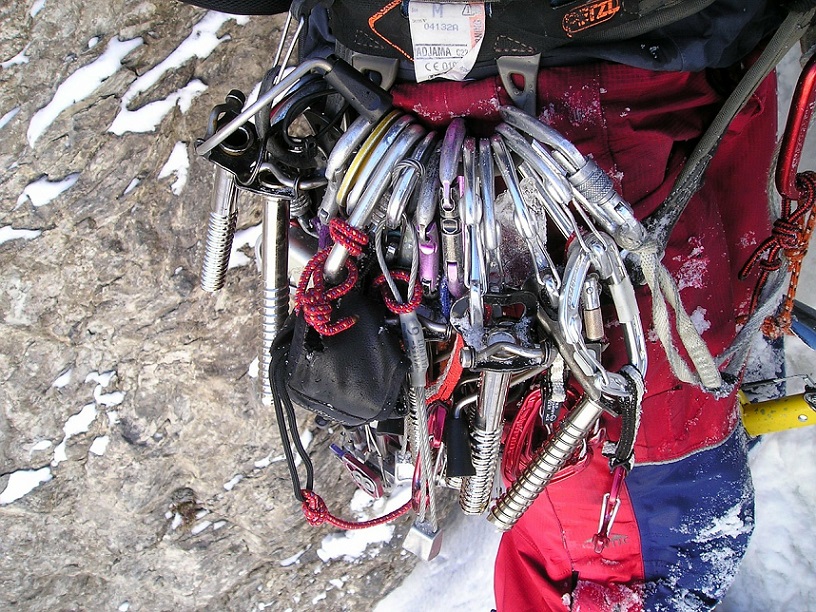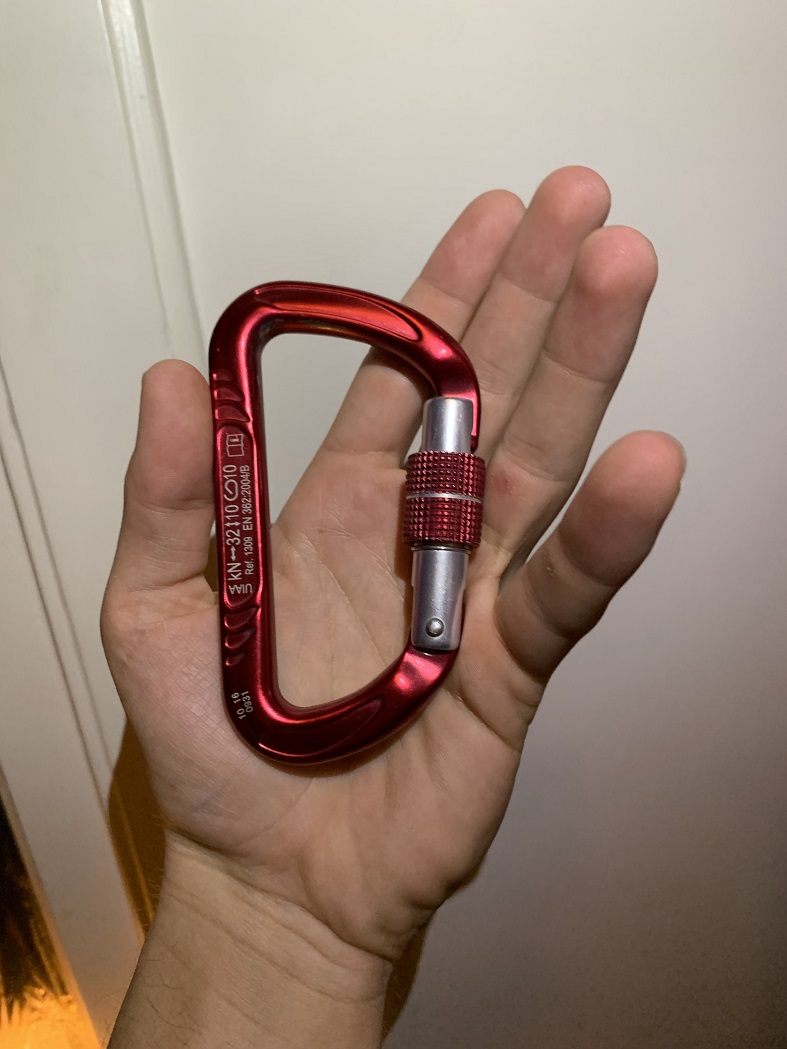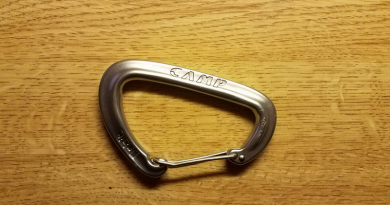The Djinn Axess versus the Spirit Express.
It’s new versus old, upstart versus stalwart, and—some climbers would have you believe—one of the more important decisions you’ll make this year. While both quickdraws experience wild popularity, there’s debate about which model offers consumers the best overall experience.
In this post, I’ll take a comprehensive look at both models so that you can make the purchase that’s right for you. Keeping the following information in mind can help you find the best quickdraw for your climb!
Let’s go!
Djinn Axess
Petzl’s newer Djinn Axess quickdraw model has drawn wide praise since its release. Still, it hasn’t gone without its share of criticism. Let’s break down both the good and the bad about this model to get a better understanding of how it stacks up to the competition.
Pros
Consumers around the world are turning to the Djinn Axess as a quality alternative to their traditional quickdraw models. But what about this model is so attractive to consumers? Specifically, the model is:
- Cheap
At its current price, the Djinn Axess is nearly half the price of some other top-of-the-line models. For this reason, the model is widely popular amongst beginning climbers and others who are looking for an affordable way to climb. With high functionality to match the price, the model has quickly spread in climbing circles.
- Large in Size
To make things even sweeter, the Djinn Axess comes in a larger size that some climbers find easier to use. Specifically, compared to other models, this piece boasts larger gates that can make it easier to clip onto bolts, particularly if you are wearing gloves. This makes the Djinn Axess a more convenient option for climbers who need a bit of extra space or who are just starting out.
Cons
What cons keep the Djinn Axess from being the perfect model? Let’s take a look below.
- Thin Dogbone
Take it from someone who’s been there: it’s no fun climbing with a thin dogbone. When your quickdraw’s sling comes too thin, it can be difficult maintaining or even getting that grip on your draw. What’s more, even routine tasks such as clipping can become a hassle. For this reason, the Djinn Axess’s thin dogbone detracts from its functionality makes it a less versatile option—particularly for more advanced climbers.
Spirit Express
The Petzl Spirit Express is one of the top quickdraw brands in all of climbing. Seen as the first choice by many professional climbers, it has a reputation of being lightweight and durable. But how does this equipment really hold up? Let’s find out.
Pros
The Spirit Express offers a number of pros attractive to consumers. Below are two of the most significant pros based on customer reviews and personal use.
- Lightweight
At just 93 grams for the 12cm version (and 100 grams for its 17cm alternative), the Spirit Express is one of the lighter quickdraws out there. In climbs where speed and efficiency are the name of the game, the Spirit Express allows users a nearly weightless journey—at least compared to other popular options.
For this reason, it’s the quickdraw of choice for both crag and long sport climbers. In a nutshell, the lightweight capabilities of the Spirit Express make it one of the most versatile options around.
- Design
The Spirit Express comes with a world-famous design that has won the hearts of climbers for years. To begin with, its thick, wide dogbone makes any climb that much easier. Easy to hold and to handle, the Spirit Express allows for convenient handling, even on those tougher climbs. Even more importantly, the draw comes with a unique bent-gate design at the bottom that facilitates easier, faster clipping and better climbs.
To make things even better, the Spirit Express comes engineered with special keylock technology that prevents the rope from snagging on the keylock gate. From start to finish, the Spirit Express is designed for serious climbers—and it shows.
Cons
Despite all its positives, the Spirit Express isn’t a perfect model. Let’s find out why.
- Expensive
At its current price, the Spirit Express is one of the more expensive quickdraws on the market. Specifically, the equipment comes at nearly double the price of some other draws that bear similar functionality (if to a lesser degree). For this reason, it’s likely not the best quickdraw for beginners or for those operating on a budget.
Verdict
So, what’s my final verdict with this information in mind?
It seems I’ll have to go with the crowd on this one. In terms of pure functionality alone, Petzl’s flagship Spirit Express offers you the most bang for your buck—even if you are spending nearly double the price.
While there are some definite advantages to the Djinn Express—the large gates being the first that come to mind—it’s hard to say that these can even come close to the benefits offered by the Spirit Express. Simply put, the latter provides climbers like you and me with a more versatile, lightweight, and hassle-free experience.
Perhaps that’s why the Spirit Express has remained a bestseller for years, despite its heavy price tag. And while the model has its own setbacks, most of my issues with the piece come not from its functionality but from the price.
Think about it this way: if both items were free, which one would you choose? The choice is pretty simple: the Spirit Express is the clear performance winner, which should be enough to settle this debate for just about anyone.
Still, that doesn’t mean that the Djinn Axess is a bad model. Anyone who’s actually used the piece knows that it’s a durable, highly functional piece of equipment—even if it can’t really compare with its elite predecessor. The Djinn Axess will always have its place amongst beginning and learning climbers and those climbers who are on a tight budget.
So which one should you choose: Petzl’s up-and-coming Djinn Axess or their fan-favorite Spirit Express? While the decision is ultimately up to you, this climber has already made his mind up. I recommend the Spirit Express to any climber looking for a top-end quickdraw model.






